|
|
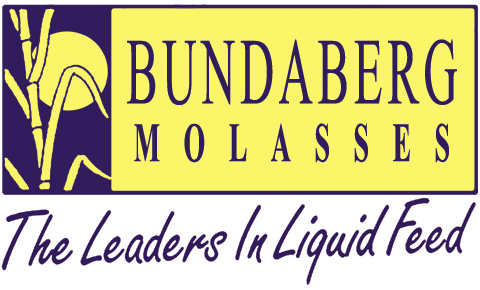
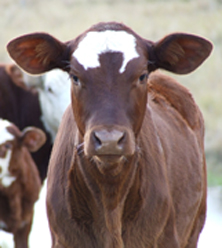 Since its establishment in 1991, Bundaberg Molasses has become the largest supplier of molasses for animal feed in Australia.
Bundaberg Molasses is however, much more than a supplier. Our experience and expertise has been gained through Bundaberg Sugarís 100 year association with the Australian livestock feed market. This, combined with the experience and expertise of our overseas affiliates, means Bundaberg Molasses has the knowledge and resources to help our customers with all facets of livestock production.
Since its establishment in 1991, Bundaberg Molasses has become the largest supplier of molasses for animal feed in Australia.
Bundaberg Molasses is however, much more than a supplier. Our experience and expertise has been gained through Bundaberg Sugarís 100 year association with the Australian livestock feed market. This, combined with the experience and expertise of our overseas affiliates, means Bundaberg Molasses has the knowledge and resources to help our customers with all facets of livestock production.
Our market leader status has been achieved through strong emphasis on customer service, technical support, innovation and new product development.
At home and through our overseas connections, Bundaberg Molasses continues to expand its product range to encompass other high quality, value for money feed products.
Strong market initiatives such as the availability of
guaranteed year-round supply through contracts and
substantial capital investment in large storage and
distribution installations throughout Queensland, ensure we are at the forefront of the animal feed industry. Through our continual product improvement, quality control,
guaranteed supply and extensive customer support
service, Bundaberg Molasses will continue to maintain and earn its reputation as The Leaders in Liquid Feed.
Bundaberg Molasses has a range of supplements for all types of cattle - from paddock fed, to dairy and feedlot - there is a product that will meet your individual needs. The information provided in this website is aimed to inform you of these products, and to allow you to evaluate the best approach for feeding molasses to your animals.
Molasses is produced as a co-product in the milling process to convert sugar cane to raw sugar. Bundaberg Molasses is the division responsible for marketing the molasses produced by Bundaberg Sugarís eight sugar mills.
Bundaberg Molasses is the preferred choice of the Australian stockfeed industry because of its:
- palatability to all stock
- low cost per unit of energy
- flexibility as a supplement 0
- availability all year round
- ease of storage and handling
- competitive price
- nutrient content
- technical back-up and support
- customer service
All of the products Bundaberg Molasses offers are manufactured to the highest quality standards and undergo rigorous in-process testing. The plant at which all of Bundaberg Molasses supplements are manufactured is Quality Assured to ISO 9001-2008 and Feedsafe accredited, so you can be assured of receiving a product developed and manufactured in a quality controlled environment.
Molasses can be purchased in bulk or drums through spot sales or contractual arrangements. Prices are very competitive and transport can be arranged to anywhere in Australia.
Producer experience and scientific research have shown over many years that molasses has a significant role to play in beef production. As well as being an important ingredient in many feedlot rations, molasses is very popular for drought feeding and as a carrier for protein and mineral supplements.
Energy
Metabolisable energy is critical for animal survival and production yet lack of sufficient energy is the most
common deficiency suffered by animals. Molasses contains approximately 10.29 MJ of metabolisable energy (ME) per kg (as fed) making it an excellent source of dietary energy. As a rough guide molasses is generally considered to contain around 0.7 times the energy of feed grains such as sorghum (due partly to the lower dry matter content of molasses compared to grains (75% vs 90%)). Allowing for this, molasses is still often the cheapest source of energy.
Extra Nutrient
Molasses contains many minerals that are important for optimum animal health and performance. Molasses is high in potassium, sulphur, iron and manganese relative to the animalís requirements and contains many other essential minerals.
Nutrients such as protein and minerals can be added to molasses at varying inclusion levels to enhance its feed value and tailor the supplement for particular
circumstances. Using molasses as the carrier for additional nutrients virtually eliminates dust and settling of fines which also ensures uniform nutrient distribution within the supplement. This is important so that all animals obtain the correct level of each of the nutrients to alleviate deficiencies and avoid toxicity problems. Being so palatable, molasses also encourages consumption by all livestock. In these ways molasses helps ensure that nutrients are evenly distributed through the herd.
Production feeding
There are many cases where it can be economical to feed a supplemental source of energy such as molasses. Fattening to the required weight and condition to suit a
particular market can be worth a substantial premium. It may mean not only getting paid for more kilos but getting paid more per kilogram. On some pastures cattle may
never reach the required condition to target premium markets or they may be too old before they reached the required weight. Supplementing the diet of the cattle with molasses may mean the difference between being able to sell into a premium market and only being able to sell into a lower priced market. As molasses is relatively inexpensive it can often be profitable to feed in those circumstances.
Conclusion
The benefits of feeding molasses have been quantified by many research trials. There can be no doubt that
molasses is a great source of energy and minerals for
ruminants. It can be fed in a number of ways and is very beneficial in many situations. Cattle producers can feel confident feeding molasses, knowing that they are feeding a safe and economical supplement. It also allows growers to tailor supplements to suit their particular circumstances to reliably achieve positive results.
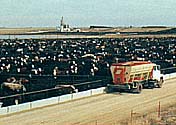 Molasses is a staple ingredient in most feedlot rations. It is commonly included at levels around 5% though MRC (Meat Research Council) research indicates that it would be beneficial to include it at higher levels such as 15 to 25%. Molasses makes an available energy source which also improves the palatability of the ration. Molasses is a staple ingredient in most feedlot rations. It is commonly included at levels around 5% though MRC (Meat Research Council) research indicates that it would be beneficial to include it at higher levels such as 15 to 25%. Molasses makes an available energy source which also improves the palatability of the ration.
The taste and smell of molasses encourage cattle to eat and because of this it is recommended especially for use in starter rations. Another benefit of using molasses is its ability to hold the fines, such as minerals and rumen modifiers stable within the ration to ensure each animal consumes the desired amount. Because of this characteristic it can also help reduce the dust in the feedlot.
Specially formulated molasses based suspension supplements such as Bundaberg Molasses' Peak-F can further improve the consistency of the ration and evenness of distribution of nutrients within the ration by suspending ingredients evenly within the molasses supplement so that mixing the molasses into the feed also ensures that these other ingredients are distributed evenly.
 Nutrition has the greatest influence on the productivity and profitability of dairying. Feed is also one of the most significant costs. Therefore it is important to find the most cost effective ingredients to supply the cow's requirements. Nutrition has the greatest influence on the productivity and profitability of dairying. Feed is also one of the most significant costs. Therefore it is important to find the most cost effective ingredients to supply the cow's requirements.
Dairy cows have a high energy requirement to maximise their milk production. On Australian farms energy is commonly the most limiting nutrient and is largely responsible for the differences in milk production between herds. Where energy is limiting the cow will use the energy for maintenance and reproduction at the expense of milk production. Providing sufficient energy in the diet to meet all the animal's requirements is therefore of paramount importance. It has been said, by the Queensland DPI, that cows on improved tropical pastures consume sufficient protein to produce 12 litres per day but only enough energy to produce 8 to 10 litres per day. This situation is common and explains the necessity to feed energy supplements to improve production.
Once the cow's maintenance requirements are met almost all additional energy will be used for milk production making this extra milk very cost effective to produce (see Diagram 1 below).
Diagram 1 - The effect of Molasses Supplementation on milk production
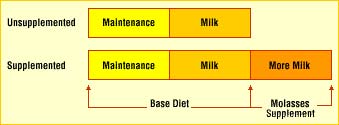
Molasses is one of the cheapest sources of energy and, when fed appropriately, can produce between 0.6 and 1 litre of milk per kg dry matter (from molasses) fed. This makes the milk produced from molasses supplements some of the cheapest, most profitable milk.
Molasses also helps maximise the utilisation of dry matter. When fed to ruminants, molasses provides a source of carbohydrate which feeds the rumen microbes and helps promote an efficient and healthy microbial population. This microbial microbial population can then achieve more efficient and more complete fibre digestion. In turn, this encourages cattle to consume the less palatable sources of dry matter which means that you can effectively utilise, and produce milk from even the less palatable forage species.
There has been evidence to suggest that in order to optimise milk protein content, sugar, starch and fibre need to be in a particular proportion to each other. Due to their different digestibility's this would ensure energy is released at a constant rate throughout the day. Many grasses tend to be low in sugar and, if unsupplemented, can cause reduced milk production. This can be compounded by nitrogen fertiliser which makes the grass grow faster but with low sugar content despite the high protein. To improve milk production cattle grazing these pastures should be supplemented with molasses to increase the sugar content of their diet.
In general, there will be positive results to molasses supplementation where energy is the limiting nutrient. Good results have also been seen by replacing some of the other, more expensive concentrates, with molasses
The response to molasses supplementation is very similar to the response to grain supplementation on a dry matter basis, according to the QDPI. It is generally not recommended to feed more than 3.5kg of molasses per head per day though good results are common up to this level (see Table below)
Response to Molasses Supplementation (QDPI)
| Grazing Conditions |
kg molasses/cow/day |
Lactation |
| Grazing irrigated |
Nil |
2817 |
| Pangola Grass |
3.6 |
3716 |
| Grazing Irrigated |
0.5 |
3598 |
| Tropical Grass/Legume |
3.5 |
4150 |
When molasses constitutes greater than 25% of the diet dry matter or more than 3.5 kg of molasses is consumed per cow per day, there tends to be declining levels of benefit. At inclusion levels far greater than this there may also be risks of metabolic disorders. Because of this, consumption should be controlled so that all rows receive their share of molasses and none over-consume. This can be achieved by feeding in the bails, using roller drums (see Beef Notes) or by chemically altering the taste of the molasses so that it is less attractive.
It is important to keep dry cows and replacement heifers in good condition also as this will improve their productivity later when they are lactating. QDPI states that for every kilogram a Friesian heifer is lighter than the recommended liveweight, her production is reduced 9 kg in the first lactation and 7 to 8 kg in the following 2 lactations. For these reasons it may be necessary to feed molasses to dry cattle in some seasons.
Overall, molasses is an excellent supplement for improving the efficiency of dairy production. It is a cost effective energy supplement and improves the utilisation of dry matter. Fed wisely, it can be a great profit-enhancing tool.
In the initial phases of drought when there is adequate dry matter but the feed is of very low quality, molasses can be used to carry additional protein above the protein it naturally contains. In this situation the addition of urea, such as in M8U, may be all that is required because the rumen microbes will have enough roughage, energy and urea to function effectively and convert the urea into microbial protein, which can then be utilised by the animal. In these cases feed intakes need only be around 2.5kg per breeder per day. It is important to remember that there is a risk of ammonia toxicity associated with feeding urea.
As the drought worsens and the quantity of feed also becomes inadequate molasses will be required in greater amounts to supply energy to the cattle. A source of undegradable protein such as cotton seed meal (CSM) may be required to fulfil the animal's protein requirements. For example, a suitable mix may consist of molasses with 3% urea and 8% CSM. A larger quantity would be required to provide energy than in the initial stages of the drought, for example 4kg per breeder.
Bundaberg Molasses provides cattle with a wide range of essential nutrients.
| |
Typical Analysis of Bundaberg Molasses
on an "As Fed" basis: |
Specifications %
TDN......................62-65
Protein......................3-5
Calcium...................1.15
Phosphorous..........0.07
Magnesium.............0.61
Potassium...............5.19
Sodium....................0.10
Chlorine...................2.98
Sulphur.....................0.73
Dry Matter................75.0
Total Sugars............50.0
Sucrose....................35.0
mg/kg
Copper.....................11.0
Zinc...........................11.6
Manganese..............82.4
Iron..........................246.0
MJ.ME/kg
Energy....................10.29 |
|
|
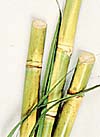
Bundaberg Molasses is produced by Bundaberg Sugar as a by-product of the sugar-milling process. This close association of companies ensures a reliable supply at a stable price.
Bundaberg Molasses is in growing demand due to marketing initiatives and the availability of year round contracts to supply a range of customers.
To contact your local agent, Freecall 1800 777 097 or (07) 4691 3000
|
|
|





